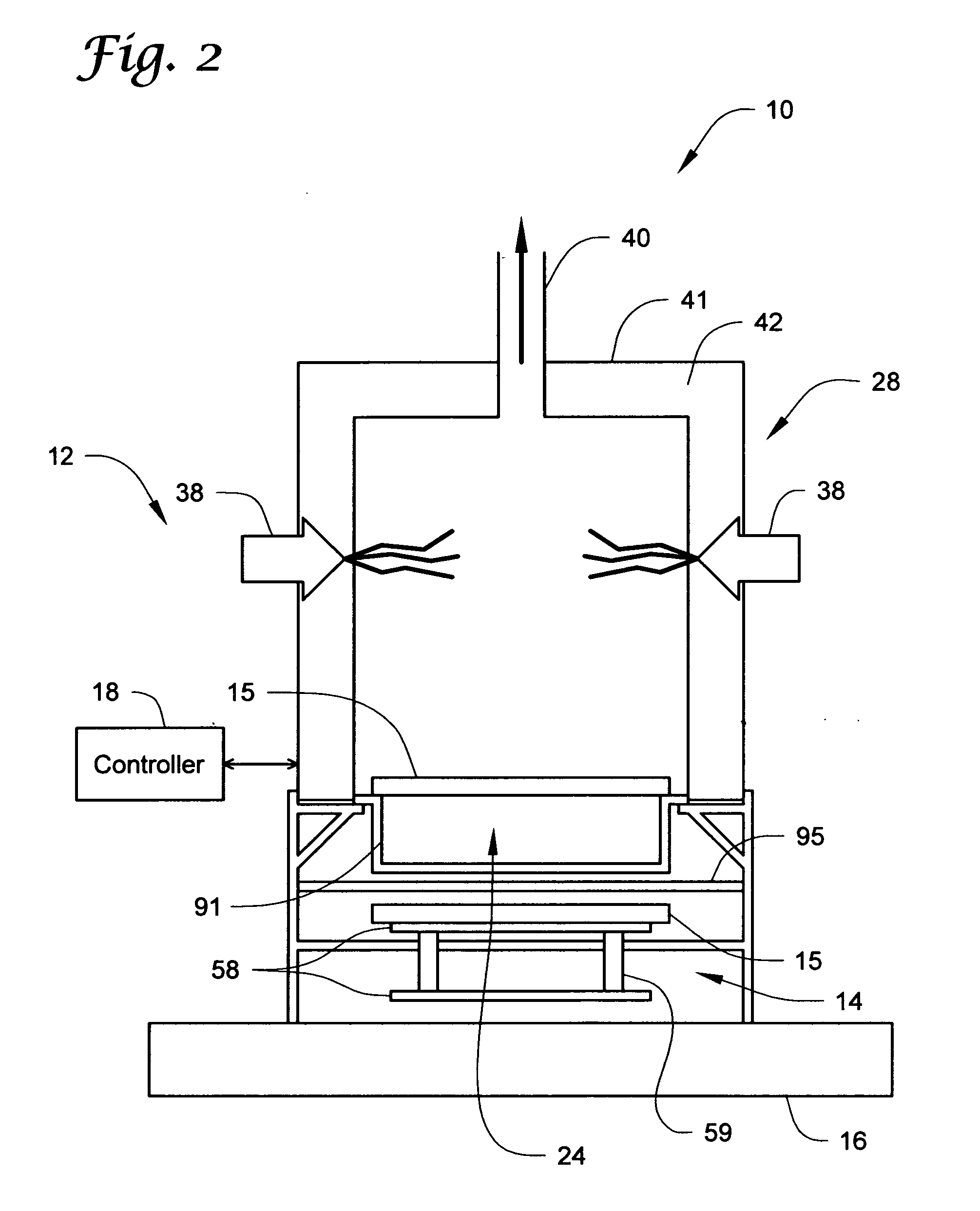Linear hearth furnace system and methods regarding same
a furnace system and linear technology, applied in the field of linear furnace systems and methods regarding same, can solve the problems of difficult feed distribution to the rhf, general non-uniform heat treatment of such balls in the rhf, and inherently fragile balls, etc., to facilitate the repair of the linear furnace apparatus
- Summary
- Abstract
- Description
- Claims
- Application Information
AI Technical Summary
Benefits of technology
Problems solved by technology
Method used
Image
Examples
Embodiment Construction
[0040] The present invention shall generally be described with reference to FIGS. 1-5. One or more detailed embodiments of the present invention shall then be described with reference to FIGS. 6-9. It will become apparent to one skilled in the art that elements from one embodiment may be used in combination with elements of the other embodiments, and that the present invention is not limited to the specific embodiments described herein but only as described in the accompanying claims. Further, it will be recognized that the embodiments of the present invention described herein will include many elements that are not necessarily shown to scale.
[0041]FIG. 1 shows a side cross-sectional view of a linear hearth furnace (LHF) system 10 according to the present invention for use in processing raw material. The LHF system 10 includes a linear furnace apparatus 12 extending along a longitudinal axis 11 between a charging end 20 and a discharging end 22. The linear furnace apparatus 12 incl...
PUM
| Property | Measurement | Unit |
|---|---|---|
| diameter | aaaaa | aaaaa |
| temperatures | aaaaa | aaaaa |
| temperature | aaaaa | aaaaa |
Abstract
Description
Claims
Application Information
 Login to View More
Login to View More - R&D
- Intellectual Property
- Life Sciences
- Materials
- Tech Scout
- Unparalleled Data Quality
- Higher Quality Content
- 60% Fewer Hallucinations
Browse by: Latest US Patents, China's latest patents, Technical Efficacy Thesaurus, Application Domain, Technology Topic, Popular Technical Reports.
© 2025 PatSnap. All rights reserved.Legal|Privacy policy|Modern Slavery Act Transparency Statement|Sitemap|About US| Contact US: help@patsnap.com



